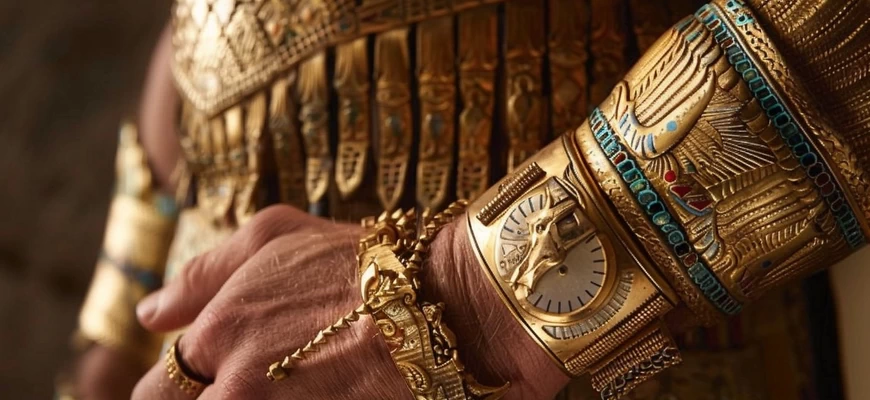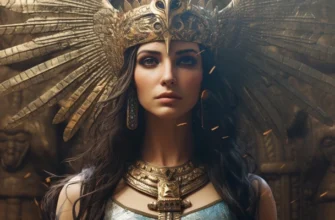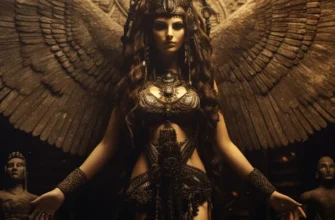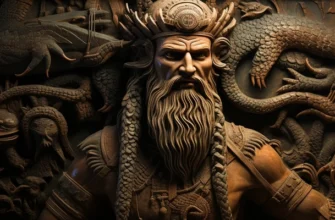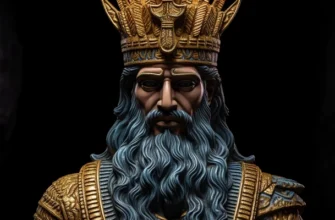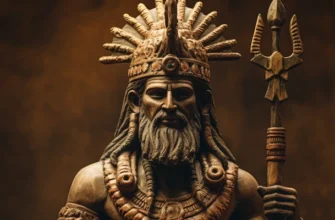The study of artifacts from ancient Sumeria reveals a fascinating aspect: the wrists of the gods were decorated with watches. This discovery, made during archaeological excavations, reveals a new perspective on the religious beliefs of ancient civilizations.
Clocks not only served a practical function, but also became a symbol of the power and greatness of the gods.
Scholars, advocating different theories, see this phenomenon as a key to understanding the perception of time and cosmic cycles in the Sumerian religion.
What is behind this mysterious ritual? Research continues, and the findings on the wrists of the gods open up new horizons in history and culture. They show that ideas about time and its meaning were rooted in even the most ancient beliefs, giving deep meaning to religious rituals and symbols.
A brief overview of Sumerian mythology
Sumerian mythology is an ancient wonder of world culture. Revealing a world ruled by a variety of gods, this mythology includes epics such as Enuma Elish and Gilgamesh, as well as a variety of deities such as Anu, Enlil, and Inanna. The Sumerians believed in a close connection with nature and the cosmos, translating their ideas into a rich pantheon of deities.
The myths of this civilization influenced subsequent religious and cultural traditions, leaving their mark in a vast epic legacy.
Artifacts are key sources for the study of history, contributing to the discovery of the past and the understanding of cultures, civilizations, and technological achievements. The study of artifacts allows archaeologists, historians, and anthropologists to reconstruct events, customs, and economic systems of past eras. This is especially important in the context of Sumerian mythology, where artifacts such as watches on the wrists of the gods reveal new aspects of their religious and socio-cultural life.
The analysis of artifacts expands our understanding of the past, making history more concrete and richer.
Clocks as part of the divine image
A clock embedded in the image of a deity not only shades the practical aspect of time measurement, but also becomes a symbol of power and greatness. In Sumerian mythology, the clocks on the wrists of the gods define their specific role in controlling time and the cosmic order.
This interaction between the deity and time reinforces the image of the god as the ruler of everything and reflects his important role in the structure of the universe, making the clock a key element of the spiritual image of the deity in Sumerian culture.
The role of time in religious beliefs
Time in the Sumerian religion manifests itself not only as a mechanical sequence of events, but also as a deep religious symbol. Deities adorned with clocks reflect the importance of time in the creation and management of the world.
It symbolizes the power of the gods over the rhythms of nature, life and death.
Time in the Sumerian religion is not only a measure of events, but also a tool of the deity to create order, regulate fate, and maintain cosmic harmony. Clocks, as part of the divine image, deepen the religious perception of time and give it a festive and mysterious character.
The significance of clocks as a symbol of power and grandeur
Watches decorated with gods in Sumerian mythology become the embodiment of power and majesty. This symbol not only indicates the deity’s control over time, but also reinforces his status as the ruler of the universe.
As an object that measures not only hours, but also days, seasons, and centuries, the clock emphasizes divine wisdom and infinity.
This symbol of power and majesty is deeply woven into religious consciousness, emphasizing deities as not only creators but also makers of history.
Clocks, as symbols of power, add to the festivity of the god’s image and reinforce his unsurpassed position in the Sumerian pantheon.
Evidence from archaeological excavations
Archaeological excavations provide strong evidence of deity adornment with watches in Sumerian culture. Finds include well-preserved clocks found on the wrists of statues of gods and various artifacts with religious content.
This archaeological evidence allows scientists to study in detail the design and characteristics of clocks, decipher their interactions with other religious objects, and understand the role of these jewelry in religious rites.
The analysis of archaeological data contributes to the discovery and deeper understanding of the practices and beliefs of the Sumerian civilization.
Description of the findings of watches on the wrists of the gods
Archaeological excavations have uncovered fascinating details: the watches decorated on the wrists of Sumerian gods are striking in their elegance.
These artifacts are made of a variety of materials, including precious metals and gemstones.
The clocks have exquisite engravings reflecting the symbolism of Sumerian religion and mythology. They are often inscribed in compositions with other ceremonial attributes, creating a complex impression of the greatness of the gods. The excavations allow us to study not only the clocks themselves but also their context, revealing important aspects of the religious life of the Sumerian civilization.
Details and characteristics of the artifacts
The artifacts discovered during the excavations are exceptional timepieces adorning the wrists of Sumerian gods. The details and characteristics of these artifacts are striking in their sophistication:
Materials: The watches are made of various materials, including gold, silver, bronze, and the use of precious stones.
Decor:
The engravings and reliefs on the clocks are extremely detailed, depicting scenes from mythology and religion, which adds to the symbolic meaning of the artifacts.
Form and construction:
The clocks have an intricate design, sometimes in the form of a wristband that integrates into the image of a god, or as a standalone object with luxurious decoration.
Dimensions: The artifacts come in a variety of sizes, from small watches to larger ones that can be designed as meaningful symbols of power.
These details and characteristics not only testify to the high level of art and craft of the Sumerian civilization, but also deeply embed the clocks in the religious and cultural context of ancient beliefs.
Conclusion.
In conclusion, the archaeological evidence for the findings of watches on the wrists of Sumerian gods reveals fantastic aspects of the religious life of this ancient civilization. The details and characteristics of these artifacts testify to the enormous talent and sophistication of Sumerian artisans. As part of a divine image, the clocks turn out to be not only a piece of jewelry, but also an important symbol of power, majesty, and control over time in the Sumerian religion. These findings reveal a deep connection between the culture and religion of the Sumerian people, making their beliefs even more mysterious.
